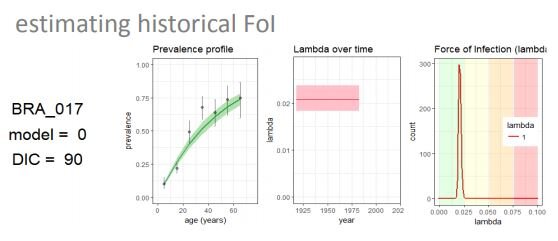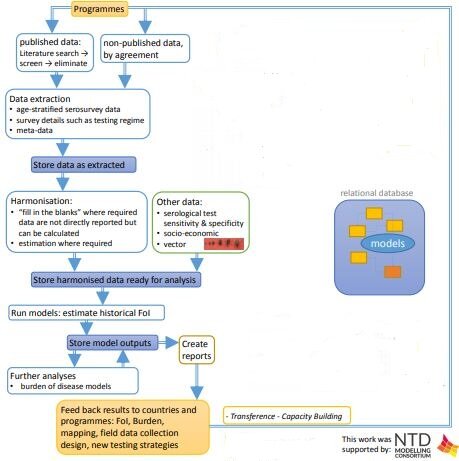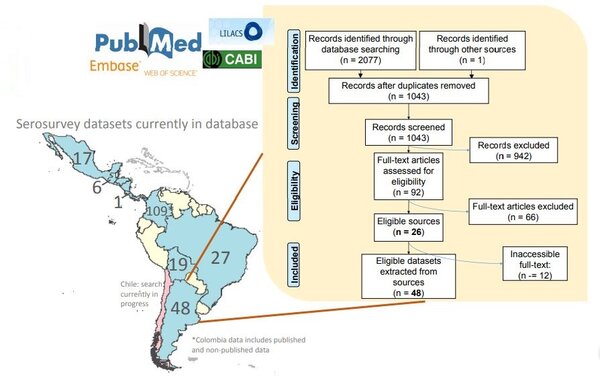Decreasing the Impact of Chagas Disease Through Modelling
The DICTUM framework for retrieving, collating, and analysing serosurvey data for Chagas disease across Latin America
Halder JB, Cucunubá ZM, Prociuk D, Nouvellet P, Basáñez MG
Rationale:
- Age-stratified Chagas seroprevalence surveys can be analysed to estimate Force-of-Infection in the past according to ages of participants
- More datasets, across more endemic countries, are increasingly difficult to manage and address individually
- We created a workflow and database for identifying serosurvey datasets and preparing them for analysis
Abstract
In order to assess progress towards interruption of intra-domiciliary transmission of Trypanosoma cruzi in the 21 endemic countries of Latin America, understanding the historical exposure to infection is paramount. Serological surveys can provide useful insight if the serological data are age-structured, because the force-of-infection (FoI) can then be estimated retrospectively according to the ages of the serosurvey participants.
Following on from previous analyses of data from Colombia, which allowed understanding of the spatio-temporal profiles of the FoI, we sought to expand this work across Latin America to support the endemic countries’ goals. The first stage was to search the published literature systematically and to construct a framework for collating, harmonising, and preparing for analysis, serological survey data which can be used to model the FoI.
We conducted a literature search, across PubMed, Embase, LILACS, Global Health, CAB Abstracts and Web of Science, to find and retrieve published serosurvey data for the 21 endemic countries. Gaps in the published, retrievable literature were identified. We constructed standardised data extraction forms, and have collated data for a subset of these countries. The serosurvey results were harmonised and stored, with survey and source metadata, in a relational database.
The total number of serosurveys stored currently is 241. This includes, from the literature search: 27 from Brazil, 48 from Argentina, 31 from Mexico, 19 from Bolivia, six from Guatemala, and one from Costa Rica, alongside 109 datasets from the Colombia study, which had been collated from published and unpublished literature. The database facilitates the retrieval of data for use in catalytic models to reconstruct estimates of the FoI through time and space. Model outputs, primarily the FoI estimates (median and Bayesian credible intervals), are also stored in the database ready for further analyses such as obtaining estimates of disease burden.
Further Reading
Cucunubá ZM, Nouvellet P, Conteh L, et al. Modelling historical changes in the force-ofinfection of Chagas disease to inform control and elimination programmes: application in Colombia. BMJ Glob Health 2017;2:e000345.


